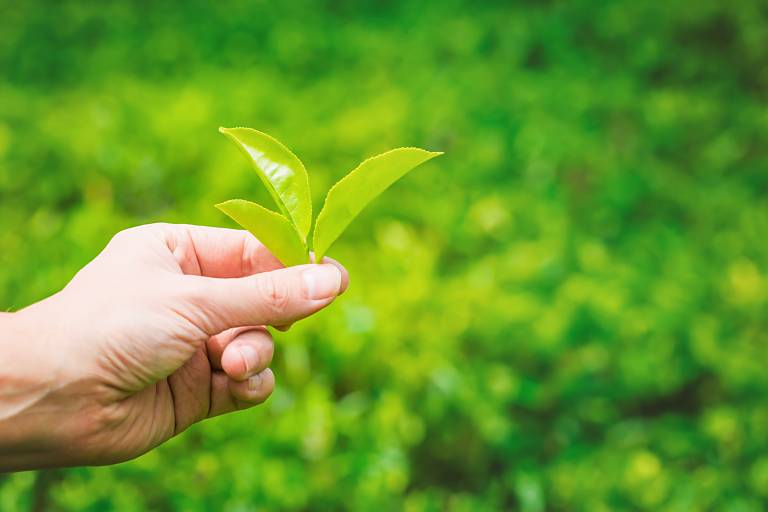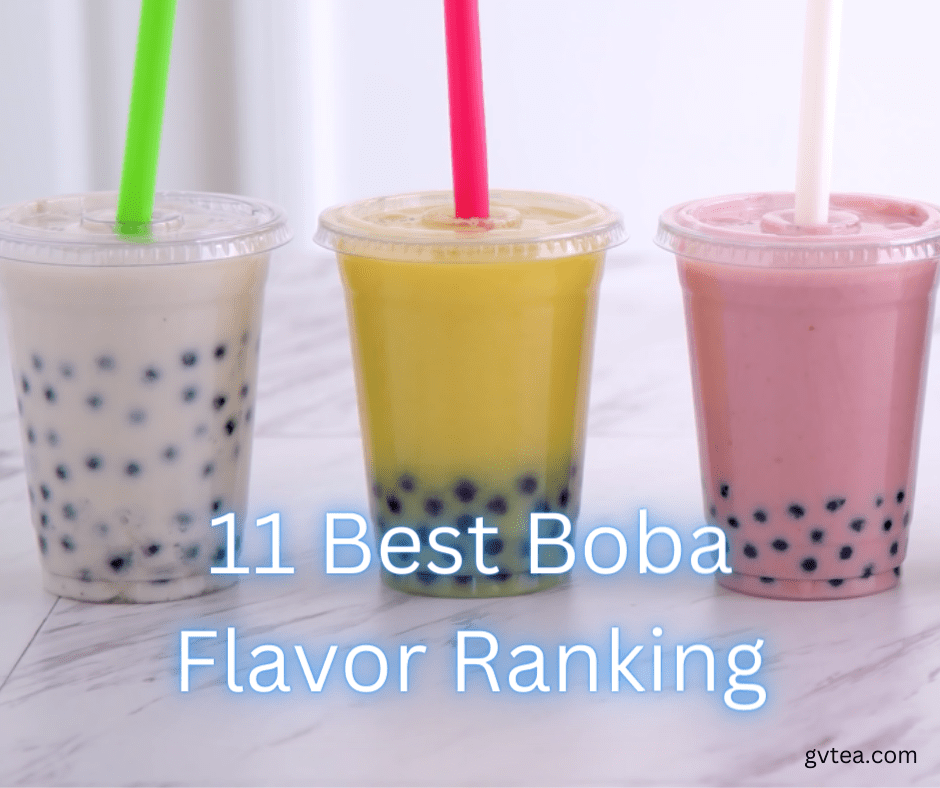Do You Eat the Pearls in Bubble Tea?
Are you a fan of bubble tea? Have you ever wondered whether or not you should eat the pearls in your drink? In this article, we’ll explore the history and ingredients of bubble tea, the types of pearls used in this sweet and refreshing beverage, the health benefits and risks of consuming them, and whether or not you should chew on them. Join us as we dive in!
The Definition of Bubble Tea
Bubble tea, also known as boba tea, is a Taiwanese tea-based drink that has become popular worldwide. It typically consists of tea, milk, sugar, and chewy tapioca pearls, also commonly known as boba, at the bottom of the drink.
The History of Bubble Tea
The credit for inventing bubble tea goes to a Taiwanese tea house owner named Liu Han-Chieh in the 1980s. Mr. Liu added tapioca balls to his tea as a fun addition, and the popularity of his new drink invention soon spread throughout Taiwan, and later, to other regions in Asia and beyond.
The Ingredients of Bubble Tea
The key ingredients of bubble tea are tea, milk, sugar, and tapioca pearls. However, there are many variations and flavors of bubble tea available depending on the region, such as green tea, black tea, or taro flavors, as well as non-dairy alternatives like soy or almond milk. Some boba shops offer fruit jelly or aloe vera as toppings, while others might use cooked tapioca balls that are softer and smoother than regular pearls.
What are the Pearls in Bubble Tea?
Types of Pearls in Bubble Tea
There are several types of pearls or boba used in bubble tea, including tapioca pearls, fruit jelly, or popping boba. The most common type is the chewy tapioca pearl, which is made from cassava root. The tapioca starch is mixed with water and kneaded to form a dough, which is then rolled into small balls and boiled. The pearls are usually soaked in honey or syrup after cooking to add sweetness and flavor.
How are Pearls in Bubble Tea Made?
As mentioned earlier, chewy tapioca pearls are made from cassava root. The cassava is peeled, washed, and grated to extract the starch, which is then mixed with water to form a dough. The dough is then divided into small pieces, rolled into balls, and boiled. After boiling, the pearls are soaked in syrup or honey to add flavor and sweetness.
Health Benefits and Risks of Pearls in Bubble Tea
While tapioca pearls do not offer any nutritional benefits, they are not harmful when consumed in moderation. However, as with any food or drink, excessive consumption of bubble tea pearls can lead to digestive issues, especially if the pearls are not cooked properly or if there is an additive or excess sweetness.
Should You Eat the Pearls in Bubble Tea?
Opinions of Health Experts
Most health experts agree that it is safe to consume chewy tapioca pearls in bubble tea, as long as they are cooked properly and consumed in moderation. However, some people may find the texture or taste unpleasant, while others may experience digestive discomfort if they swallow the pearls whole instead of chewing them.
How to Eat the Pearls in Bubble Tea Safely
If you do choose to chew the pearls in your bubble tea, make sure to do so slowly and carefully to avoid choking or any discomfort. It’s also important to drink plenty of water after consuming bubble tea to aid in digestion.
Etiquette of Eating the Pearls in Bubble Tea
When it comes to the proper etiquette of consuming bubble tea, it’s generally accepted to use the straw provided to drink the liquid and chew on the pearls as you go. However, some people prefer to use a spoon to scoop out and eat the pearls first before drinking the tea. Either way, enjoy your drink as you like!
What are Other Alternatives to Bubble Tea Pearls?
Popular Toppings in Bubble Tea
Aside from tapioca pearls, bubble tea shops offer a variety of toppings to customize your drink, including fruit jelly, aloe vera, and popping boba, which are small balls of juice that burst in your mouth when you bite into them.
Healthy Alternatives to Bubble Tea Pearls
For those who want to skip the traditional pearls altogether, there are a few healthy alternatives to consider, such as chia seeds or basil seeds, which are high in fiber and omega-3 fatty acids.
Other Beverages Similar to Bubble Tea
While bubble tea has become a popular drink worldwide, there are other similar beverages to try as well. For example, Thai iced tea or Vietnamese iced coffee are similar in taste and texture, but without the chewy tapioca pearls.
How to Make Bubble Tea at Home?
Ingredients to Make Bubble Tea at Home
If you are a fan of bubble tea, why not try making it at home? All you need is tea, milk or non-dairy alternative, sweetener, and tapioca pearls. You can also add fruit jelly or other toppings if you like.
Step-by-Step Instructions to Make Bubble Tea
- Brew your favorite tea and let it cool completely.
- In a separate pot, bring water to a boil and add the tapioca pearls. Boil for 15-20 minutes, stirring occasionally. Drain and rinse with cool water.
- Add milk, sweetener, and any toppings to your tea, if desired.
- Finally, add the cooked tapioca pearls to your drink and stir well.
Tips for a Perfect Bubble Tea at Home
When making bubble tea at home, it’s important to use high-quality ingredients, especially when it comes to the pearls. Choose good quality chewy tapioca balls and cook them properly to enhance the taste and texture of your drink. Experiment with different types of tea and flavors to find your perfect bubble tea recipe!
FAQ
Q: Do you eat the pearls in bubble tea?
A: Yes, you do!
Q: What are the pearls in bubble tea?
A: The pearls are also known as boba or tapioca pearls. They are made from tapioca starch extracted from the cassava root.
Q: What is bubble tea?
A: Bubble tea is a Taiwanese drink that usually contains a tea base, milk, and boba pearls. It can be served hot or cold with a variety of toppings such as jelly or fresh fruit.
Q: Is bubble tea healthy?
A: It depends on how it is made and what is added to it. Bubble tea typically contains added sugar and can have a high sugar content. Drinking too much of it can lead to constipation and negative health effects on the digestive system. However, if consumed in moderation, it can be a tasty treat.
Q: What is the texture of the boba pearls?
A: The boba pearls have a chewy texture that makes them fun to eat.
Q: How are the pearls made?
A: The pearls are typically made by combining tapioca starch with hot water and stirring it until it forms a dough. The dough is then rolled into small balls and boiled until cooked.
Q: What flavor is bubble tea?
A: Bubble tea comes in a variety of flavors such as green tea, taro, and fruit teas. It can also have added flavoring to enhance the taste.
Q: Can the pearls be seen in a CT scan?
A: Yes, a 14-year-old girl in China who drank too much bubble tea had undigested pearls at the bottom of her stomach that were seen in a CT scan.
Q: What are some of the toppings that can be added to bubble tea?
A: Some popular toppings include jelly, fresh fruit, and tapioca pudding.
Q: Do the pearls contain any additives?
A: Some pearls may contain additives to enhance their flavor or texture. It’s important to read the label or ask the vendor about the ingredients.










